Fort Building 101
“LOOK!” screams a four-year-old with such joy that we know this isn’t a garden-variety “I want to share something with you” moment.
As the gang rushes to her side, they come to a complete standstill, frozen in awe.
Oh happy day! Some kind souls have shared a fort with the community! There before us stands the most wonderful teepee-shaped fort that we have ever seen. Forts have been popping up all over town this year—and I couldn’t be happier about this trend.
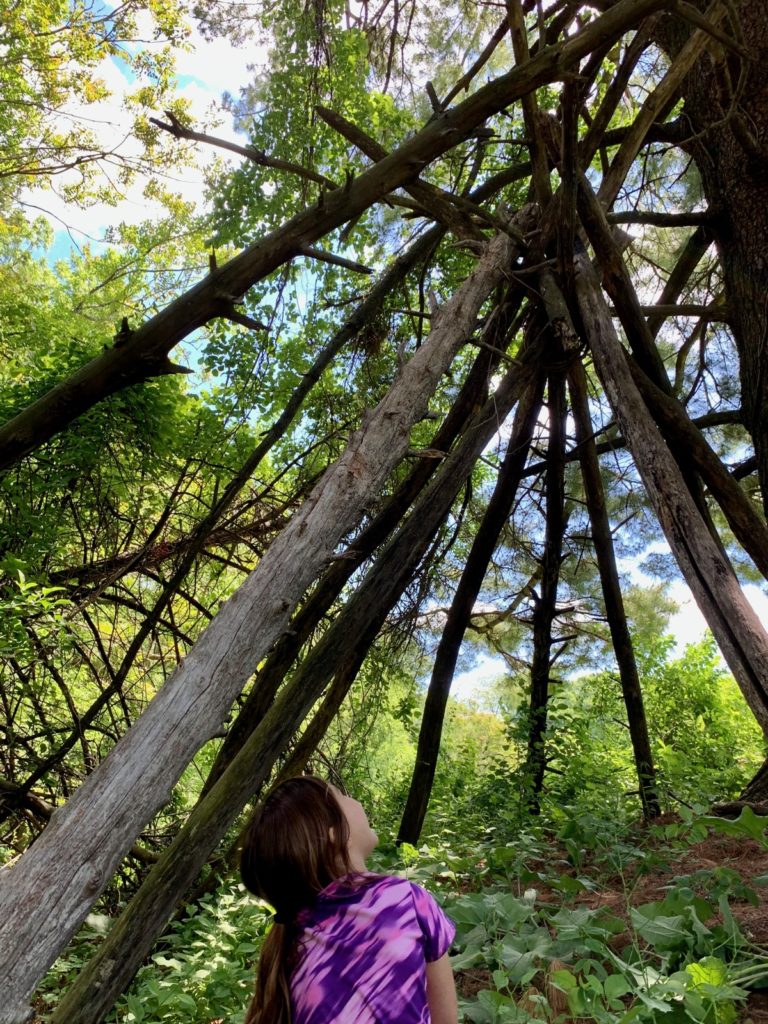
This 14-foot high monument has sparked wonder and curiosity in all of us. We have stumbled upon a STEM adventure! This is math, science and engineering play that allows the learning to come naturally and at each child’s developmental level. This is also sharing. It teaches children that our community creates beautiful spaces to be enjoyed by all.
“Who lives here?” asks Liam as he bravely ventures closer.
“Can we go in?” questions three-year-old Madison, not sure that she really wants to.
We do go in, and the investigation into fort building sets us in motion for the day. Do you remember building forts when you were a kid? Did the memory of that fort just resurface? If it did, you retained that memory and are likely able to build another.
These are the moments that we like to create for our early learners. Hands-on learning enables children to take their understanding to a deeper level so that they can analyze the information that they have collected and then apply this knowledge when they create their own forts.
After giving everyone a turn to observe and discuss the masterpiece in front of us, we take a good hard look at the fort and investigate how it was constructed so that we can build a fort of our own.

We discovered this fort (above) while hiking in our neighborhood.
“I think this fort was started from that fallen branch!” Harper hypothesizes.
This leads to closer observation as we determine that this fort has sides that were built with sticks ranging in size from large to small. By leaning them against the main branch, the architects made the fort longer and wider. We begin to get a better sense of measurement as we visually estimate the length and width of the fort.
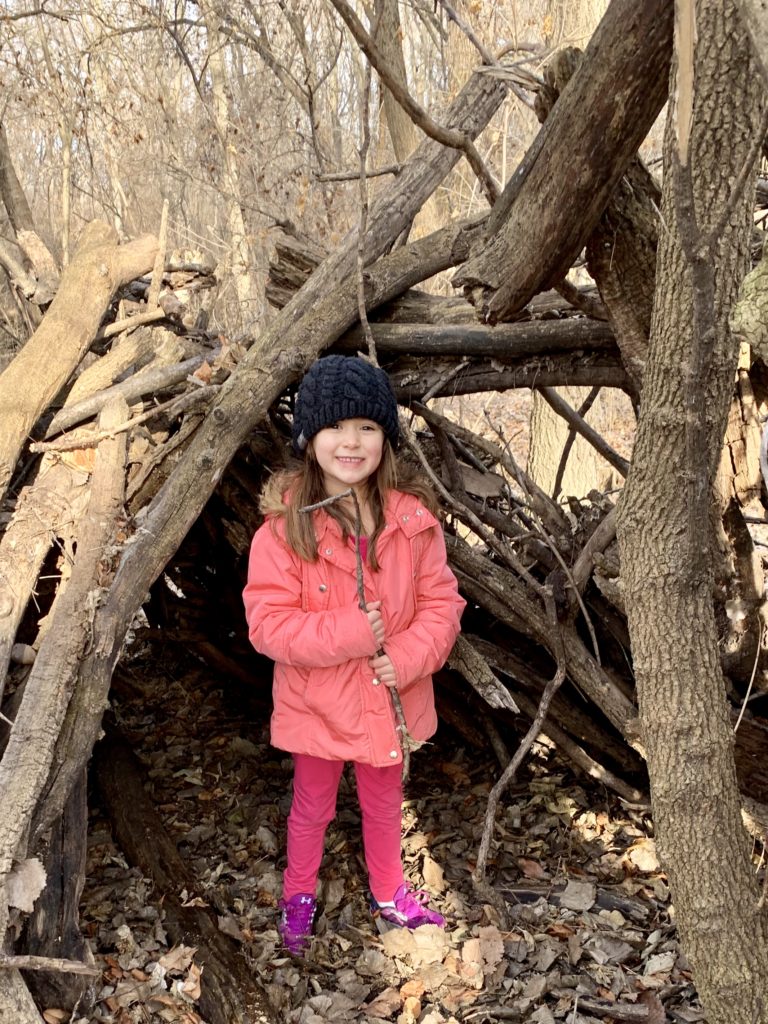
We always add a few sticks or branches to any fort that we discover, and today is no different. The older children quickly begin to add branches—an activity that reinforces our perception of the fort as a communal structure. When our younger learners hesitate, we reassure them that they really can’t go wrong by adding a stick or two.
“It looks like a triangle!” shouts Elizabeth. This declaration leads to an animated discussion about shapes and ways to incorporate doors, windows and other shapes into our fort.
We have a geometry class happening before our very eyes! We are looking at two- and three-dimensional shapes and using visualization, spatial reasoning and geometric modeling to solve problems.
These are opportunities that are rich in learning, creativity and team building. We share theories and develop hypotheses about the number of people it might have taken to build the fort, how they got the biggest branches up so high and how they created a base to stabilize the entire structure. We also examine the bottoms of the branches and hypothesize that they were probably broken off during a storm, rather than cut cleanly with a saw.

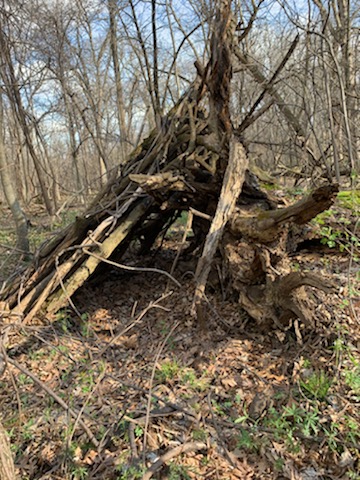
We know that our forts won’t look like the ones that we’ve encountered. We’ll have to use whatever materials we can find in our own play spaces. But our observations give us a better understanding of the fundamentals of fort and teepee construction. These found structures are the spark of inspiration that we need to design a fort of our own!
It’s time to bring out the assessment chart because this gang is on fire! This playful experience in engineering involves concepts such as angles, inclines, balance and elevation. When we let children learn through play, movement and trial and error, we lay the groundwork for the kind of deep learning that builds new neural connections.
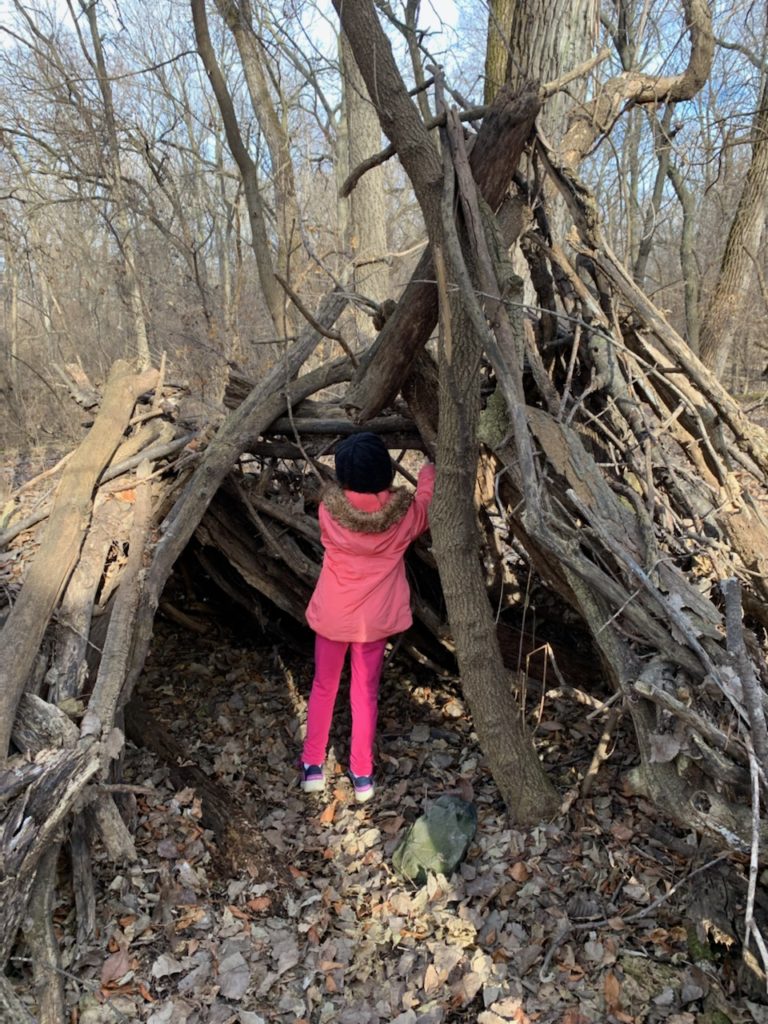
Once the seeds are planted, the children often continue to develop their fort-building skills in our program or in their own backyards.
When the Midwest experienced a rare derecho in August 2020—and every house in our area suddenly had a backyard full of branches—our students immediately began collecting the fallen branches to build forts in their neighborhoods.
They had joined the community-wide fort-building movement!
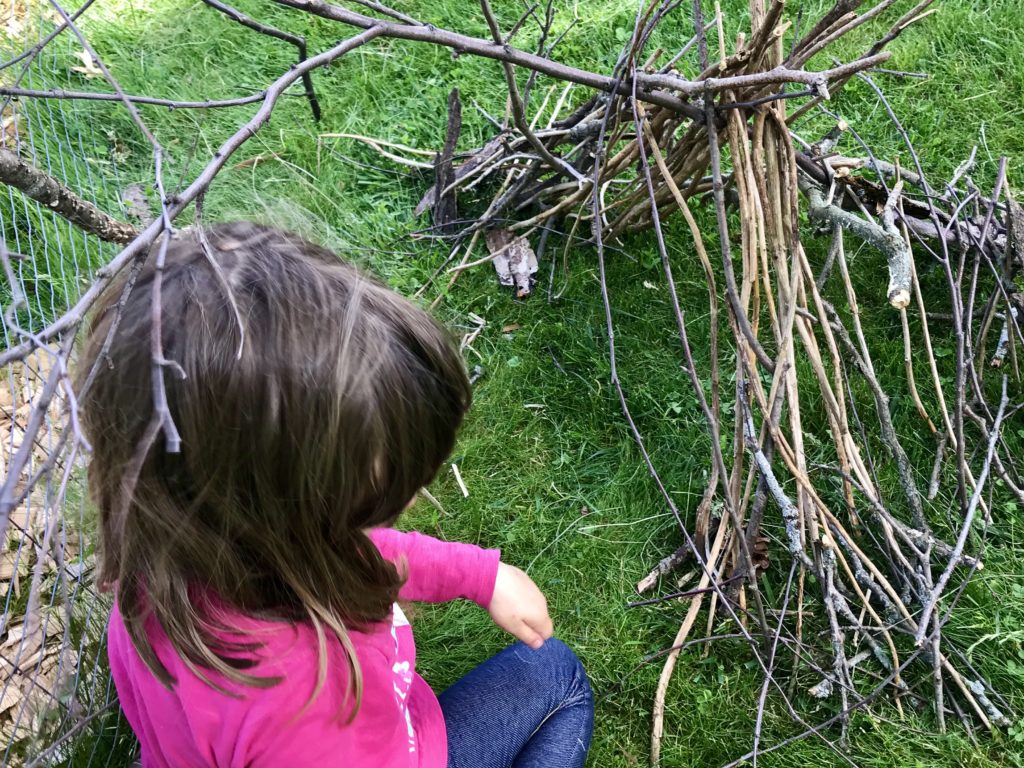
Notice the similarities? By giving our children long periods of uninterrupted time to play and investigate, we empower them to build their own forts and develop new STEM skills and insights that they will be able to transfer to worksheets when the time is right.
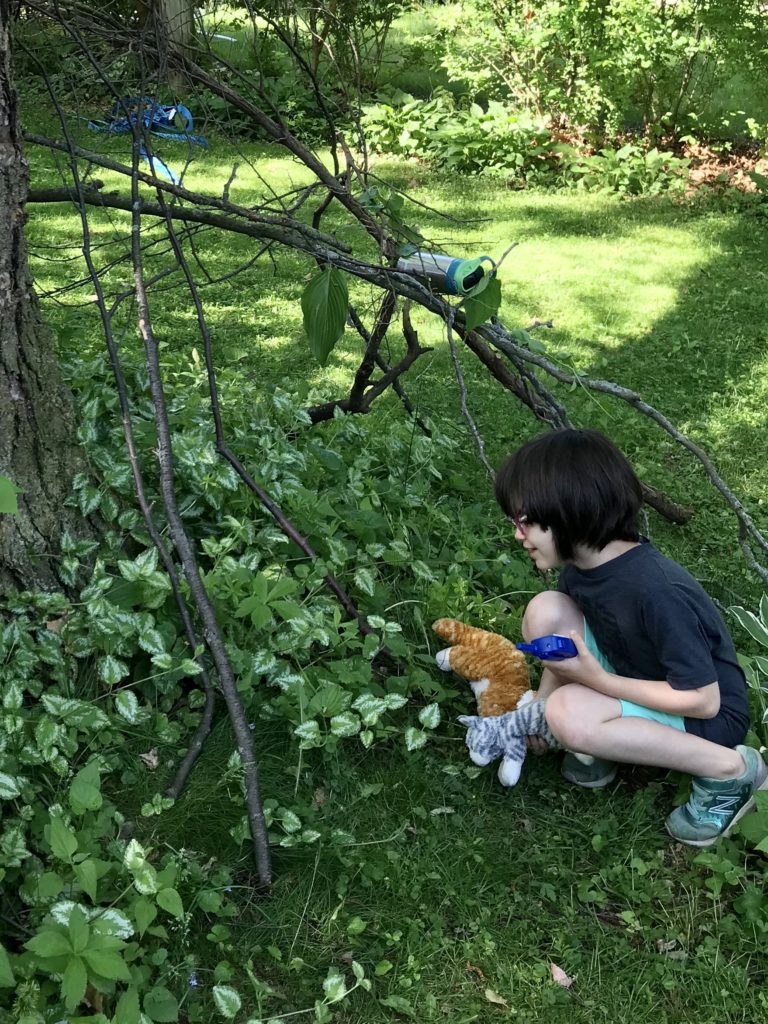
When our students returned to our program this fall, we began napping outdoors on a daily basis. Not surprisingly, when a parent suggested a weekend nap to their child, the child insisted on napping outdoors—in her fort. When children build structures, the joy comes not only from the building but from returning to this place that they have created by themselves, for themselves.
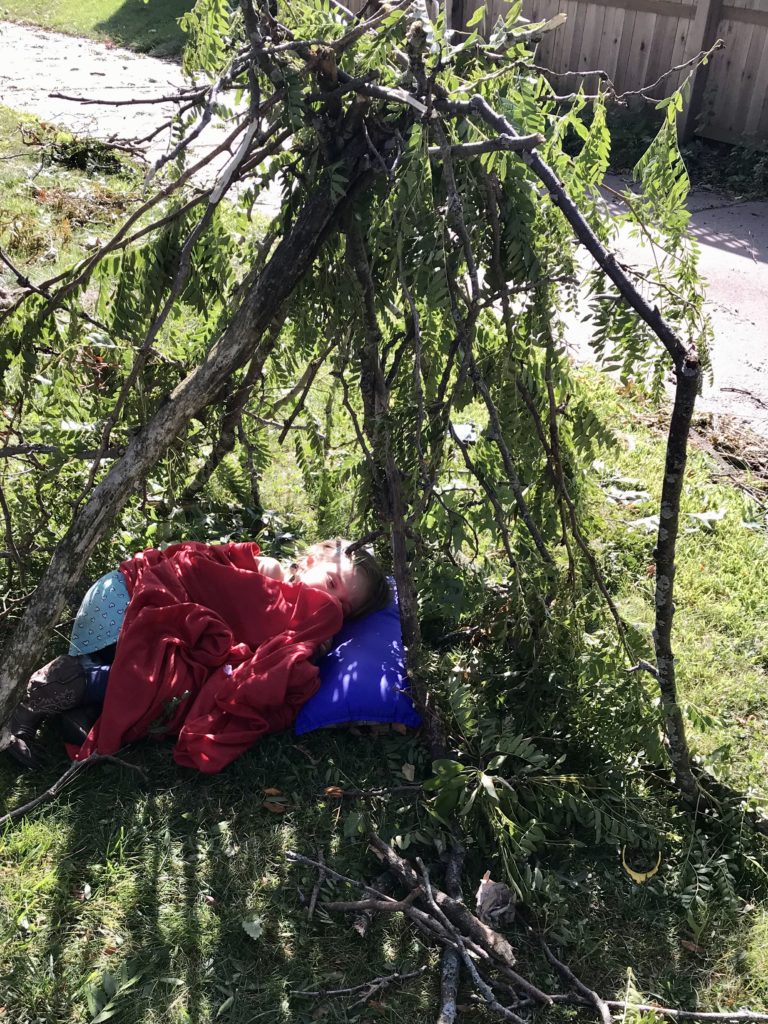
These are the moments when I thank our anonymous community of fort builders for “planting the seeds” of fort building with our young learners. These industrious fort architects may be 12 years old or 90 years old. They may be building these impromptu structures to offer protection from the weather, bring joy to others or simply provide a peaceful place for fellow community members to commune with the natural world.
These lovely forts are gifts of time, hard work and beautiful design that bring science, math and engineering into the lives of our youngest citizens.
Thank you for making so many moments of STEM learning possible through play with the children of our community! You inspire all of us! Thank you! You are truly changing our world!

This is a really cute idea.
Wow I never would of thought about taking a nap outside with the children. I think that is a really great idea to implement. Nothing better then sleeping outside under some shade with fresh air. Being able to discuss their surroundings.
What a great idea for children to do; they will really get in to problem solving to make the branches work together to support itself.
I totally agree and this is something that every child would enjoy and want to participate in every day!!!
This is an amazing way to introduce problem solving as well as counting to your children. They can count how many branches it takes to support the fort and it will help them identify the numbers while counting.
We can carry this over at the Block area by making for the children
What a great way to introduce measurement and counting. I will have to try the napping outside.
This is a great activity because it teaches early geometry and spatial awareness as well as the importance of measuring. Without measuring, we would not be able to build a fort that would maintain it’s shape. Once we are done, there will be plenty of time to play in the fort we have made for ourselves which will be a fun conclusion to this lesson.
This is a great opportunity for children to explore math in a realistic, 3-D way. It allows them an opportunity to use reasoning skills to help them understand and replicate a structure.